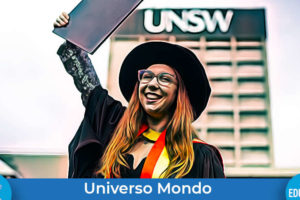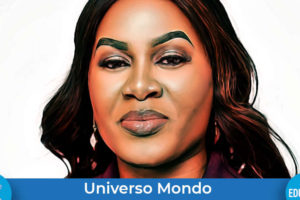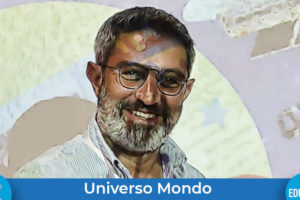Aggiornato il 29 Maggio 2024

Let’s start as usual by talking a little about yourself: tell us what you do, your current role and the path that brought you here?
I am a researcher in astrophysics and in my work I use numerical simulations to study galaxy clusters and the large-scale structure [of the universe]. I live with my family in Italy, but I commute, since I work at the University of Ljubljana, where I teach astrophysics to undergraduate and graduate students.
Being part of the Slovenian community that lives in Italy, I attended Italian schools with Slovenian as the teaching language and then completed the physics and astrophysics programme at the University of Trieste. Having completed my PhD, I collaborated with the Space-SI center of excellence in Ljubljana within the astronomy group at the Faculty of Mathematics and Physics, where I still work.
Science outreach fascinated me so much that I pursued a Master’s in Science Communication at Sissa. Even though I kept doing research, I tried to stay up to date in this area too, coming into contact with a very different reality, one that allowed me to explore.
How established is research in astronomy and space science in Slovenia?
In Slovenia, at the Universities of Ljubljana and Nova Gorica, research in the astronomical field spans a wide range: from research related to the Sun, binary stars and compact sources, up to research in the stellar, galactic and cosmological domains. Since the two research groups are relatively small, international collaboration and active participation in various missions is very important – including JWST, GAIA, 4MOST, Fermi, Pierre Auger, Vera Rubin.
Being part of ESA also provides advantages in this area: Slovenia has been a “cooperating state” since 2009 and should become a full member soon.
What about the state of scientific teaching and dissemination?
At this historical moment, Slovenia is experiencing the same problem we also find in Italy, even if the two systems work and are structured differently. There is a heavy shortage of teachers in STEM subjects at primary and secondary school level, so much so that schools have been hiring people who have not yet completed their teaching qualification.
This indirectly affects also the teaching of astronomy, which is not a curricular subject in mandatory school, but is taught in afternoon activities or as an optional subject (if there are enough students enrolled).
In the past, technical and scientific subjects were very well integrated both in schools and beyond, with a high number of magazines and newspapers appealing to all audiences. Over the years, I believe the perception of science and the way of communicating it have changed, also complicated by general problems in print media. There are way fewer magazines (either specialized or not), the space for science in newspapers has been reduced, and even in the field of communication there have been transformations linked, for example, to new technologies. Some methods of science communication – for example via social media – arrived later here than in Italy.

How are these problems being addressed?
Overall, I believe there is a great need for science communicators, who are trained to deal with complex issues, but (with some exceptions) they are given little space in the media or their importance is not considered. There is also little attention for science communication in general, especially from politicians.
For example, the project of the Znanstveni center – a science center – which could have been relevant from this point of view, was recently abandoned. At the same time, however, the fact that the country is relatively small means there is a good connection between the media (and the relatively few science journalists) and researchers.
Anyhow, there is still a lot of work to do, both introducing young researchers to the field of communication and working with the general public. Even in universities and research institutes, institutional communication is not well consolidated and would require expert communicators. Besides, the first conferences on science communication have been held in Slovenia in the past few years, which could lead to a dedicated study programme in higher education.
As you live and work between Italy and Slovenia, what do you think are the main differences between these two countries in this context?
Because of my history it is easier for me to notice similarities and differences between the two countries between which I divide myself. Clearly these are two countries that have very different histories; however, some of the problems, such as the lack of STEM teachers, but also the lack of general practitioners, are incredibly similar.
One of the differences that surprised me the most, and with which I have the most difficulty, concerns the school system: in Slovenia, your school grade (and the grades or their average) is one of the key requirements for enrolling in high schools (which actually differ based on the students’ academic success), and subsequently at university. A system structured in this way leads to various problems – including social inequality – which are now partly being discussed.
On top of research and university teaching, you are very active in science education and outreach. How do you manage to reconcile these two aspects of your career?
I don’t think I can reconcile the aspects of teaching, research and public outreach; there is continuous readjustment. However, I find that in some way they complement each other.
The education part, which started by collaborating in the selections for the national astronomy competition and in the preparation of participants for the International Astronomy and Astrophysics Olympiad, brought me closer to younger folks, to those who later became my students. This also allowed me to improve my teaching and seek new ways to bring university teaching closer to students. At the same time, science communication, writing and talking about science, has helped me keep up to date and expand my teaching.
Conversely, I understood that some of the topics covered in my field of research can also be fairly presented to an audience of young people interested in astronomy. In practice, there is a virtuous circle that helps me in research and teaching, and from which I also draw many ideas to try to improve myself as a communicator.

What’s your favourite outreach project you’ve worked on?
The project that is closest to my heart is definitely the astronomy podcast. As a radio lover and listener of several podcasts, four years ago I finally decided it was time to try and make one dedicated to astronomy. I think it was the right time: we were in the second wave of podcasts in Slovenia (many new podcasts were born in those years) and this was the first podcast (in the true sense of the word) entirely dedicated to astronomy that was not part of a radio circuit.
And how did it go?
The biggest challenge was trying to create content about astronomy, a science that is primarily visual, but through the voice: after all, radio is a visual medium, because it allows the imagination to roam. With MaruÅ¡a Žerjal, who is also an astrophysicist, we started by talking about astronomical themes, including astronomical riddles based on audio tracks, then broadening our scope to research related to astronomy, spanning from archaeoastronomy to microbiology, astronomical technologies, meteorology, astronautics, communication… It gives us both a lot of satisfaction and I believe there is still a lot of room for growth.
What do you think contributes most to the success of such a project?
I believe that the group of people, the team that creates it and helps it grow, contribute to the success of every project.
I could name many projects, but if I had to choose one I would name Cosmolab, because it encompasses them all to a certain extent: it’s an association created by Andrej GuÅ¡tin, Andreja Gomboc, Barbara RovÅ¡ek and myself, with Jure Japelj and MaruÅ¡a Žerjal joining at a later stage. Our aim is to offer interesting astronomy and non-astronomy news on the “Portal v vesolje” (Portal to the universe) but also educational material for boys and girls, parents and teachers. Furthermore, we actually organize workshops, exhibitions and collaborate on international projects, also involving young astronomers (mostly students). The goal is to help create a community, also a community of outreach practitioners.

In your opinion, what are the greatest challenges for science communication, both in your country and on a global scale?
In Slovenia I believe the greatest challenge is to create a community of science communicators and to convince politicians of the importance of science communication in the current era.
At a global level, I believe that in coming years we will have to work a lot explaining complexity, be it linked to issues of climate change or artificial intelligence, and also provide the public with adequate tools to make informed decisions.
Among your various roles, you are also the International Astronomical Union’s (IAU) National Astronomy Education Coordinator (NAEC) for Slovenia. How does the collaboration with international partners work within the IAU and what do you take home from these experiences?
The IAU offers the opportunity to grow and collaborate with international partners through various projects and the dissemination of good practices. A few years ago we participated in the STEAM-Med co-design project, a project to create astronomical activities for schools developed between nations bordering the Mediterranean and led by the OAE Italy Center. It was more than a project: codesign was a process, which encompassed stories from very different countries and gave us the opportunity to discuss non-astronomy topics as well. Currently I collaborate as facilitator on the Sabir Project, working with four countries to develop activities with an IBL (inquiry based learning) approach.

One of the most difficult aspects for me is being able to counteract my overall shyness, also because the most exciting part is being with new people, learning to communicate and collaborate. I believe that the STEAM-Med project was very educational for me, because it gave me the opportunity to get to know people, places and complexities that I would probably have never encountered in my field of research.
Final question (by now a classic…) Are there authors, books, people or special events that have influenced you along your journey?
One of the events I love to talk about was the first time I looked through a telescope. I was at an astronomical camp, and the first object they showed me was the Moon: when I looked at it closely, I felt like I was floating above the lunar surface. From there the path was clear (even though I will never become an astronaut…)




Add Comment